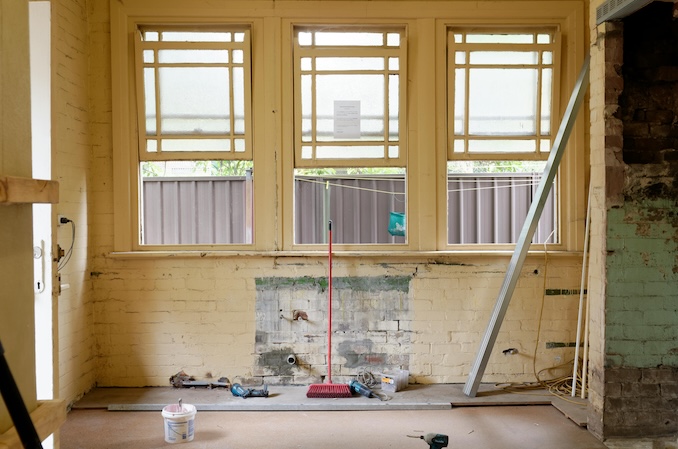Asbestos, once prized for its heat resistance and strength, is now known for its severe health risks. Found in many older homes and buildings, asbestos can lurk in insulation, flooring, ceiling tiles, and more. When undisturbed, it often poses little immediate threat. However, attempting to remove it yourself, even with the best intentions, is a dangerous mistake that can have lasting consequences.

Professional asbestos removal Calgary services exist for a reason. Improper handling can expose you, your family, and your neighbours to hazardous fibres that are invisible to the naked eye and can remain airborne for hours or days.
The Invisible Threat: How Asbestos Exposure Happens
Asbestos fibres are microscopic. When materials containing asbestos are disturbed, these tiny fibres become airborne. Inhalation is the primary route of exposure, and the effects may not manifest for decades. Unlike other home hazards, you won’t smell, taste, or feel asbestos fibres in the air.
Diseases linked to asbestos exposure include mesothelioma, asbestosis, and lung cancer. All are serious, often fatal, and entirely preventable, but only if exposure is avoided from the outset.
Even minor exposure can have cumulative effects. Repeated inhalation of small amounts of asbestos fibres over time dramatically increases the risk of developing serious illnesses. Children and elderly individuals are particularly vulnerable, making it even more critical to maintain strict control when dealing with asbestos materials.
Common Misconceptions About DIY Asbestos Removal
“I Can Wear a Mask and Be Safe”
Not all masks are created equal. Basic dust masks do not provide sufficient protection against asbestos fibres. Only specially rated respirators designed for asbestos can offer any real defence, and even then, professional training is required to use them properly.
Moreover, using a respirator without full protective clothing leaves other parts of the body exposed. Asbestos fibres can cling to hair, skin, and clothing, allowing them to be inhaled later or carried into other areas of the home.
“I Can Just Wet It Down”
While it’s true that wetting asbestos materials can reduce dust, this method alone isn’t foolproof. Disturbing asbestos while wet can still release fibres, and without proper containment, they can spread to other areas of your home.
Also, wet materials can create slippery surfaces, increasing the risk of accidents during removal. A fall or sudden breakage can release a large quantity of fibres instantly, leading to massive contamination.
“It’s Only a Small Area”
Even minimal disturbance can release a significant number of asbestos fibres. It doesn’t take much exposure to create a long-term health risk. Small DIY jobs often result in contamination that requires far more expensive professional remediation afterward.
Once fibres enter a home’s ventilation system, they can circulate throughout the entire property. Cleaning HVAC systems after asbestos contamination is complex and costly, often requiring total replacement.
Legal and Financial Consequences of DIY Asbestos Removal
Handling asbestos without the proper certifications can violate local and federal laws. Penalties for unauthorised removal can include hefty fines and even potential criminal charges in extreme cases.
If you plan to sell your home, a history of DIY asbestos work can also complicate the sale. Disclosure laws may require you to reveal the asbestos issue, and improperly handled materials can scare away potential buyers or lead to legal liability later.
Insurance policies may not cover damages or liabilities resulting from unauthorised asbestos removal. This can leave homeowners fully responsible for cleanup costs, legal fees, and health-related claims made by affected parties.
The Professional Approach to Asbestos Removal
Certified Inspection
The first step is always a thorough inspection. Professionals identify where asbestos is located and assess the risk level. In some cases, leaving it undisturbed is safer than removal.
Inspections also include air quality tests and material sampling, ensuring no hidden threats are missed. Professionals follow stringent protocols to guarantee accurate assessments.
Safe Containment
Specialised containment measures, such as sealed plastic sheeting and negative air pressure machines, prevent fibres from spreading. Workers wear full-body protective gear and use specialised respirators.
Containment zones are meticulously set up and monitored during the entire removal process. Regular checks ensure that no breaches occur, maintaining the highest level of safety.
Proper Removal and Disposal
Asbestos waste must be handled and disposed of according to strict regulations. Licensed professionals transport it to certified disposal facilities, ensuring it never poses a risk to others.
Every step, from bagging waste to labelling and transportation, follows established legal requirements. Skipping any of these steps can result in contamination or regulatory violations.
Post-Removal Testing
After removal, air quality testing ensures that the area is safe for re-entry. This critical step is something DIY efforts almost never address.
Third-party air monitoring provides objective verification that the environment meets health and safety standards, giving occupants peace of mind.
Health Costs: The True Price of DIY Mistakes
The cost of professional asbestos removal might seem high, but it’s nothing compared to the potential medical costs associated with asbestos-related diseases. Treatment for mesothelioma, for example, can easily exceed hundreds of thousands of dollars. And no amount of money can fully undo the devastating health impacts.
Exposure doesn’t just affect the person performing the removal. Family members, pets, and future occupants of the home are all at risk. Without professional containment, fibres can lodge in carpets, furniture, and ventilation systems, creating a long-term hazard.
The emotional toll of an asbestos-related diagnosis can be crushing. Families face not only financial hardship but also prolonged suffering and uncertainty. Choosing professional help from the start can prevent this heartbreak.
Why Professional Help is Non-Negotiable
Expertise
Certified asbestos professionals have the training to recognise different types of asbestos-containing materials and the best methods for handling them. Their knowledge minimises risk at every stage.
They also stay current with evolving regulations and technology, ensuring that every project meets or exceeds industry standards.
Equipment
Specialised tools, containment materials, and protective gear are critical to safe asbestos removal. Professionals invest heavily in maintaining proper equipment that DIYers simply don’t have access to.
From HEPA-filtered vacuums to specialised negative pressure machines, the right equipment makes a significant difference in maintaining safety.
Compliance
Professionals know the regulations inside and out. Hiring a certified team ensures compliance with all local, provincial, and federal laws.
Full compliance not only protects health but also shields property owners from costly legal disputes and penalties.
DIY projects are satisfying and often cost-effective, but asbestos removal is one job you should never attempt yourself. The health risks, legal issues, and long-term financial consequences far outweigh any short-term savings.
If you suspect asbestos in your home or building, always call a certified professional. Protect yourself, your family, and your future by choosing the safe, responsible path.
When the time comes, trust Double Clean Restoration to handle asbestos removal safely and thoroughly.
